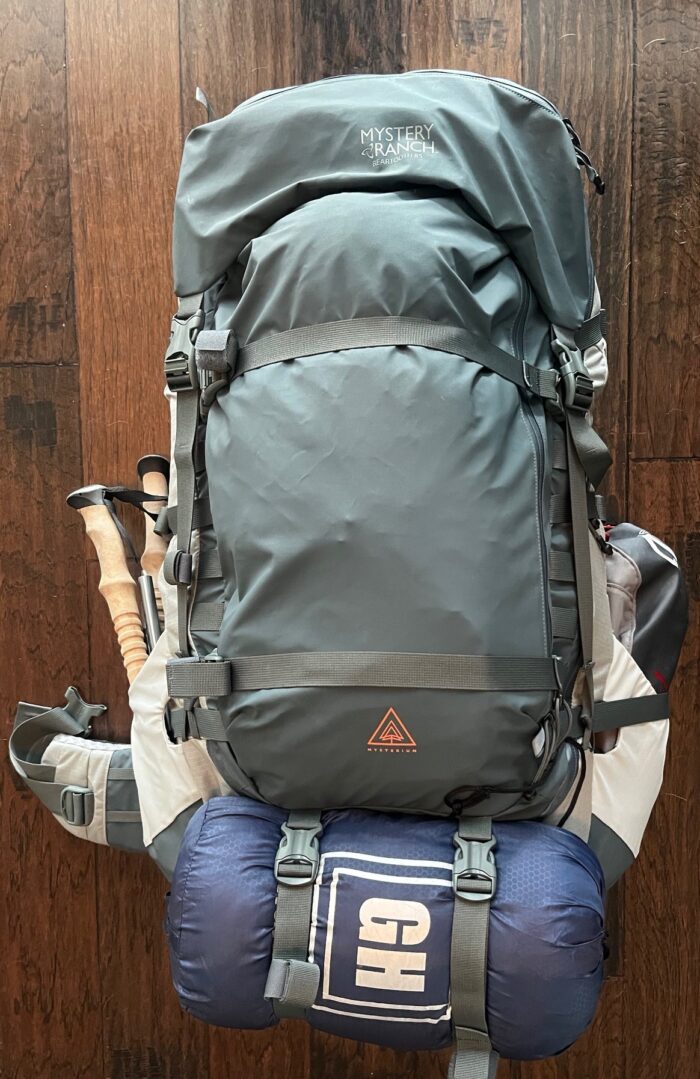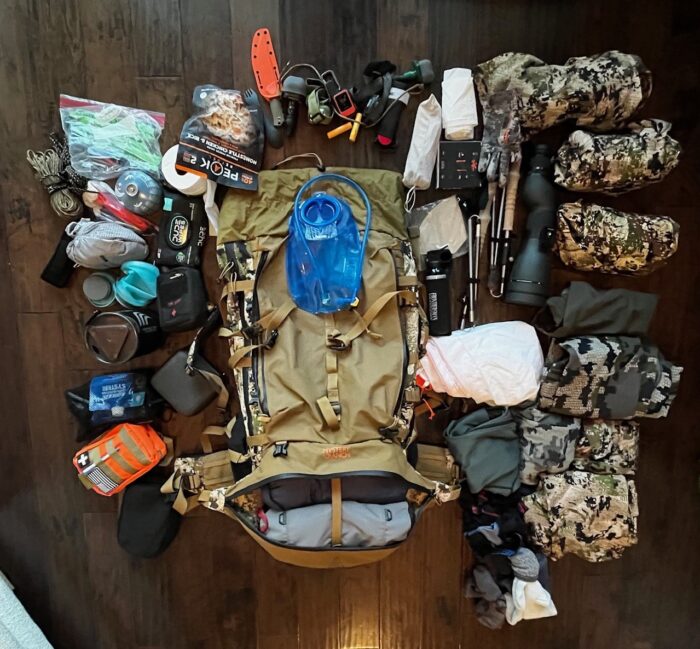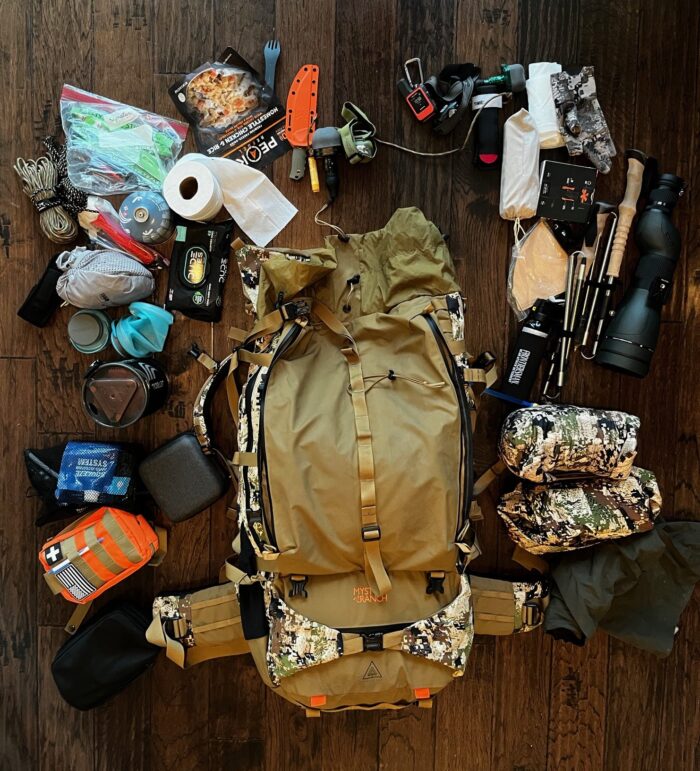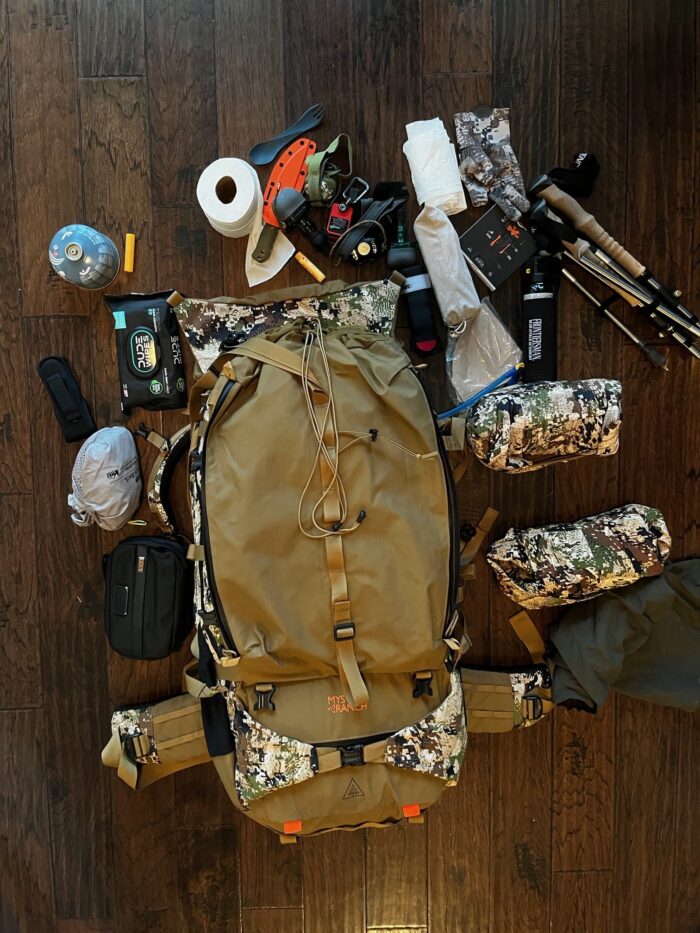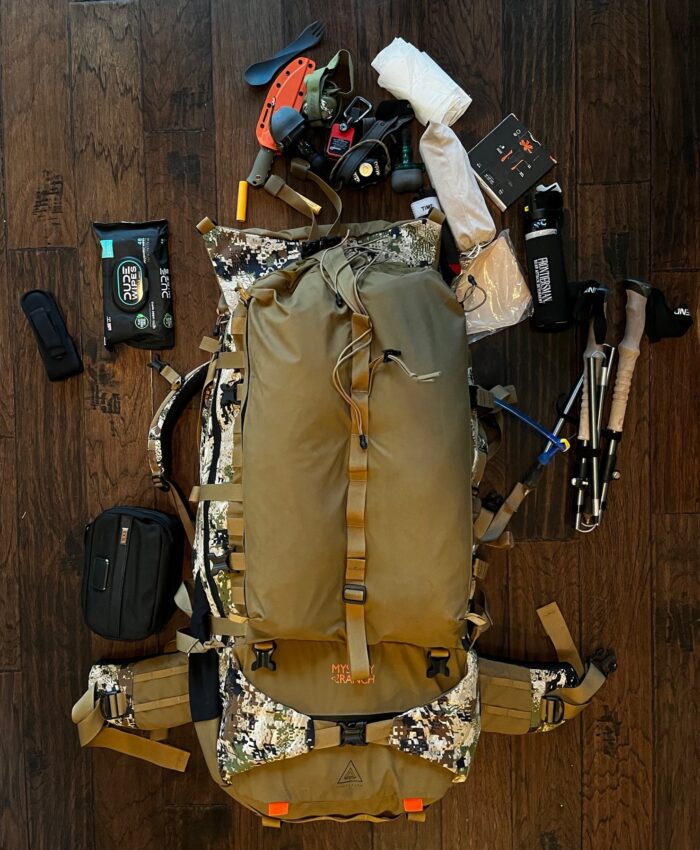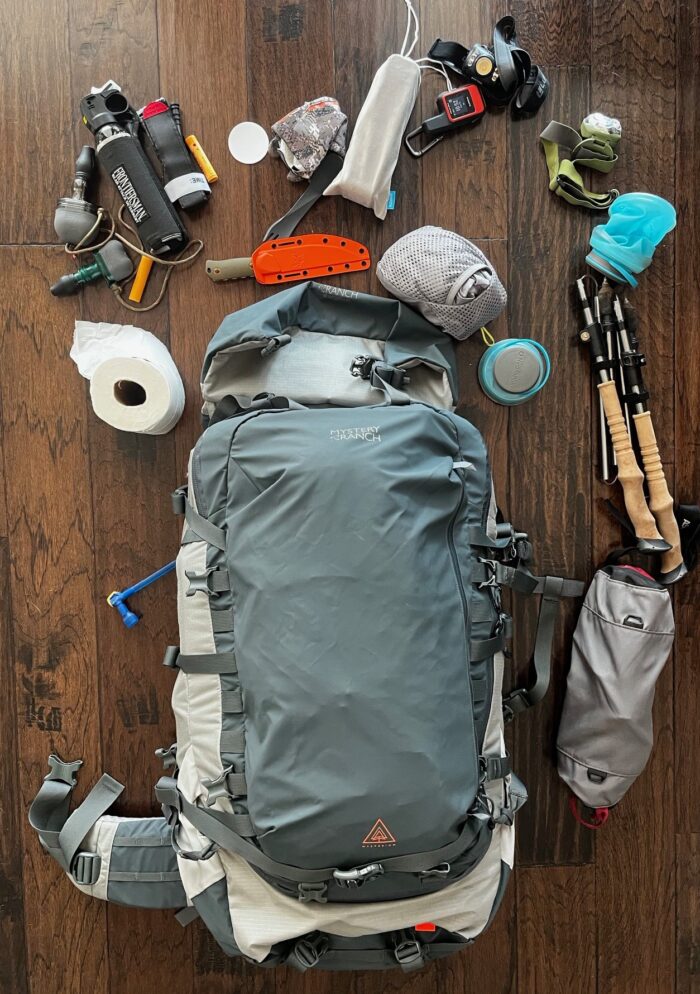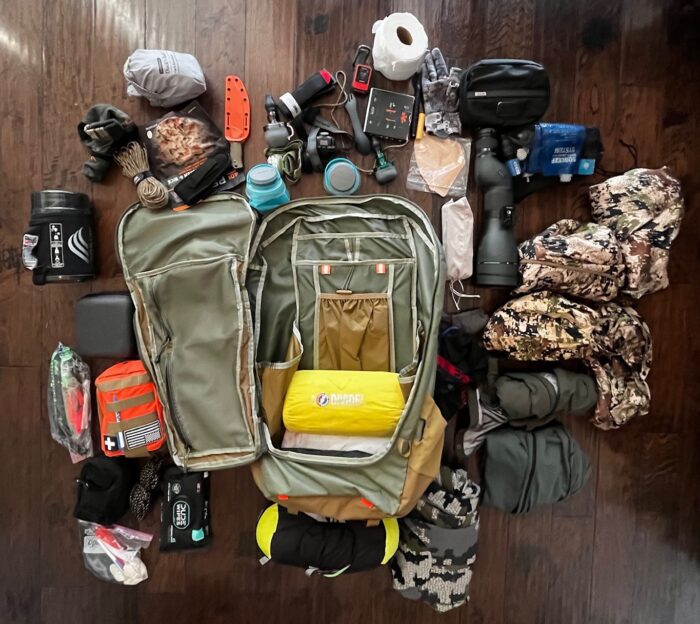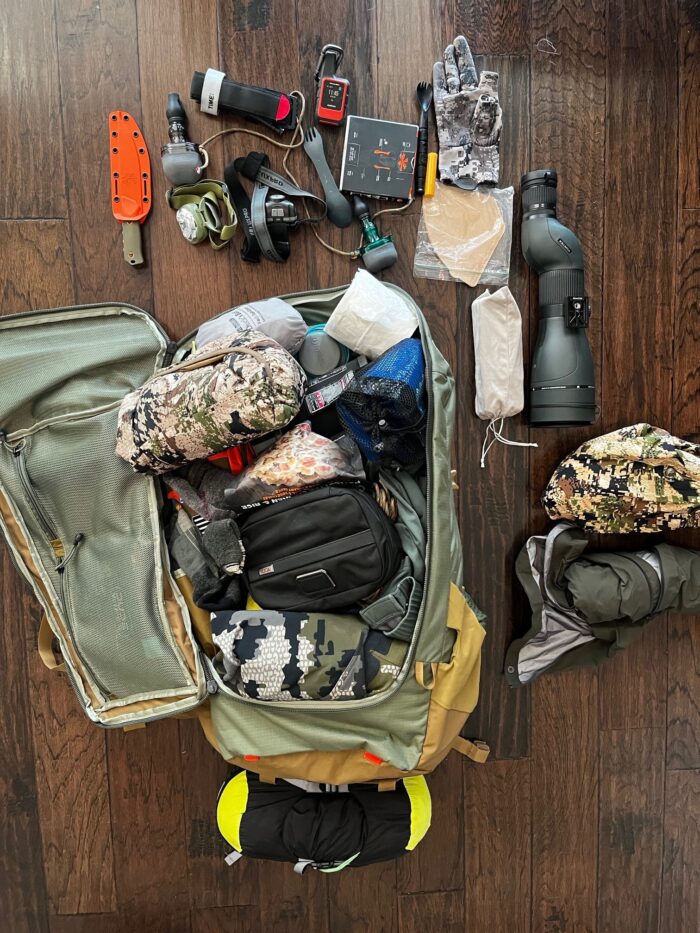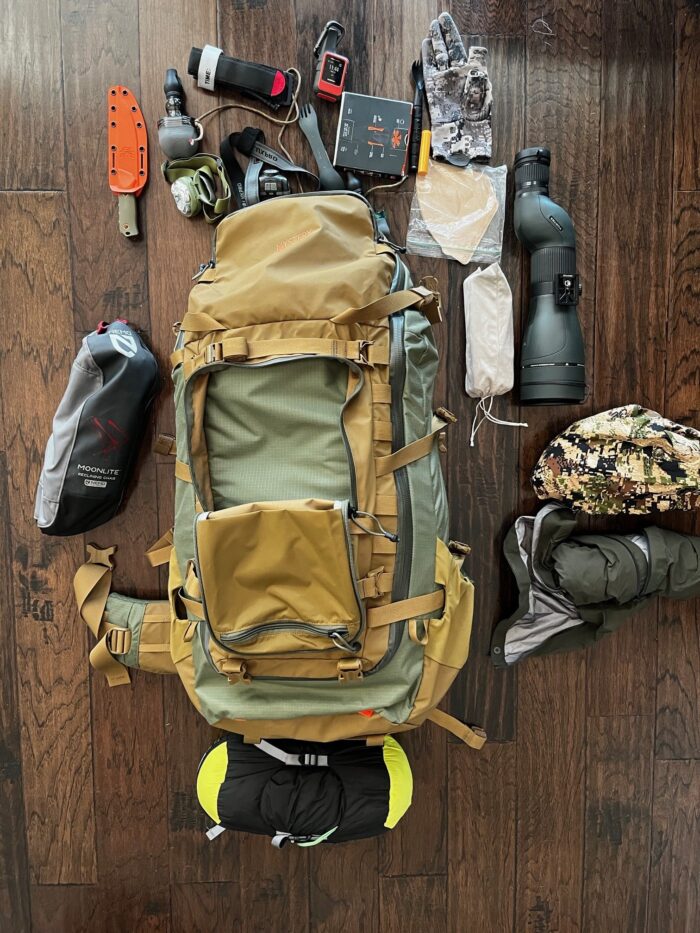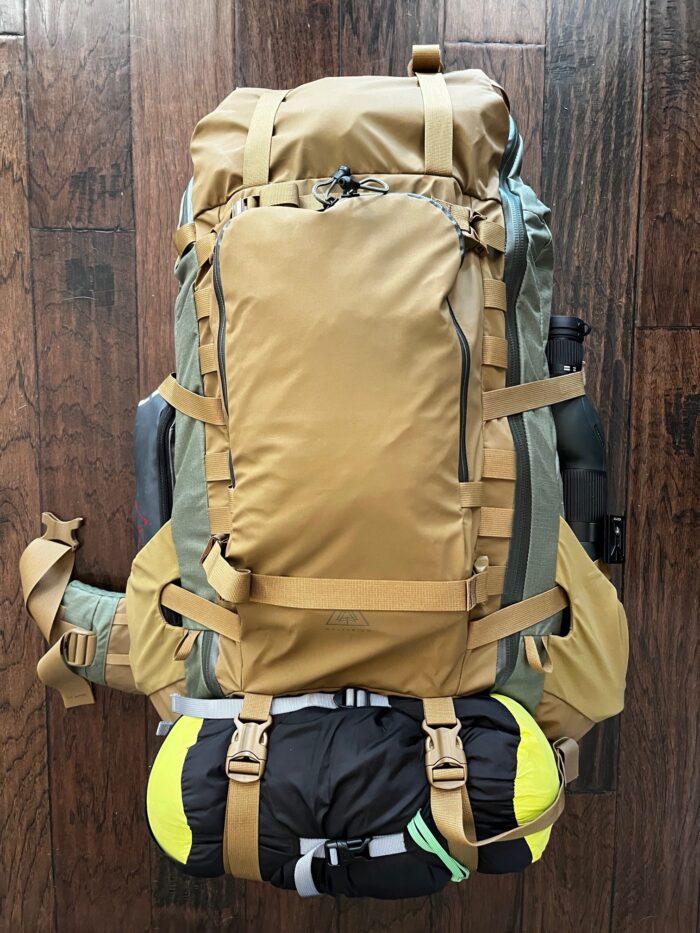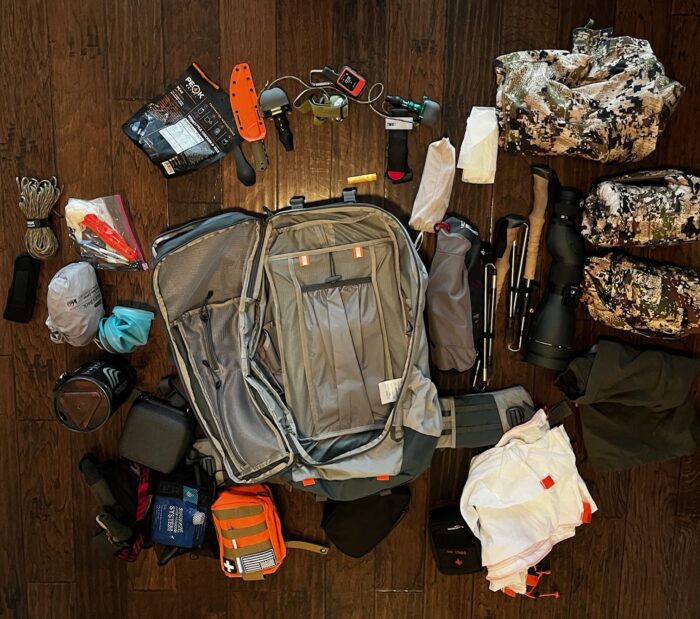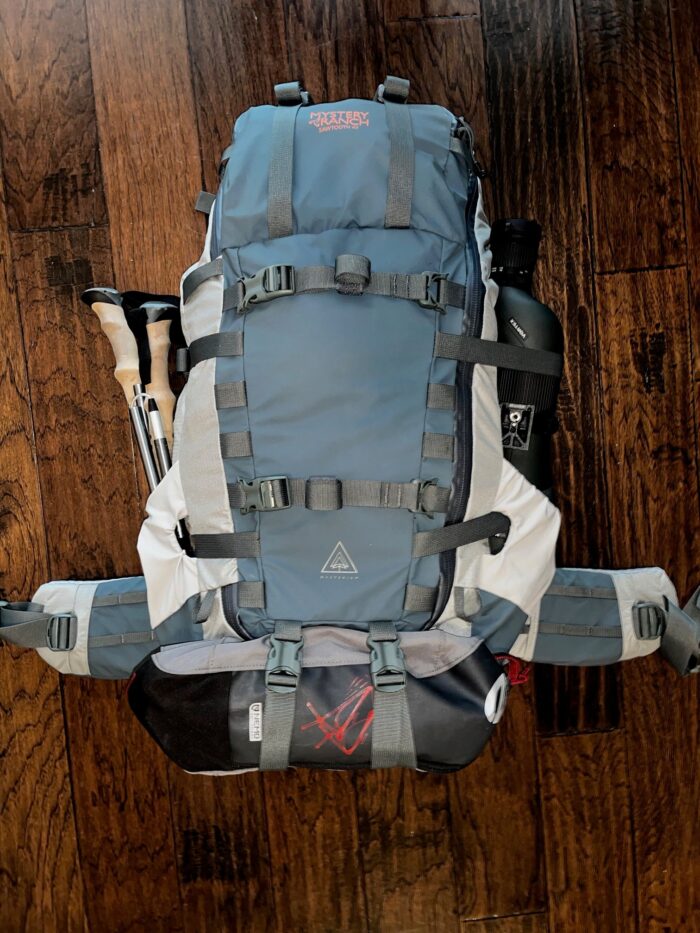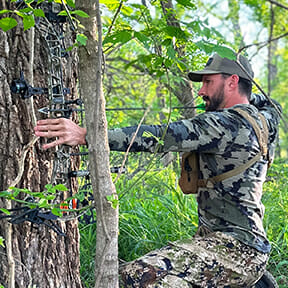Pack Smarter, Hunt Longer: The MYSTERIUM Series Explained
September is right around the corner, and if you’re anything like me, there is probably only one thing on your mind right now – elk season. We have gone over the importance of choosing the right pack for your hunt based on features, but how to load your pack is just as important. I’ll take you through how I load my pack to get the most miles out of a good hunting week, and give a little insight on which pack might be best for your hunts this year.
Just so you know, the first thing you’ll need to take a look at is your hunting setup. Do you have a Basecamp? Are you primarily going to spike camp? Do you plan on being out for several days? Do you plan on day hunts only? All of these play an essential role in selecting the size of gear you need to get the job done.
The next thing you’ll need to consider is the quality of the gear. Again, I am a big fan of Mystery Ranch, always have been, and they’ve released an elite new line of packs. This isn’t a deep dive gear review – you can find plenty of those elsewhere. My goal here is to give you an overview of this new series, help you pick the right pack for your hunt, and, more importantly, show you how you can load it so it works for you in the field.
How to select and load your MYSTERIUM series packs
First, let’s look at the latest from MYSTERY RANCH, The MYSTERIUM Series. The MYSTERIUM series consists of four new packs – the SAWTOOTH 45, SAWTOOTH 65, BEARTOOTH 85, and the MARSHALL 105. All share the same central theme in their evolution of durability, compatibility, and comfort.
- More organization – you want more side pockets and storage locations, you got it with quick access pockets, exterior water bottle pockets, and internal compartments for the highly organized hunter.
- Mud, dirt, water repellent, and overall toughness – advanced fabric mapping combination of Robic Kodra Rip Stop and 5 PM-coated weather-resistant CORDURA makes for both high abrasion resistance and lighter overall weight.
- Better Suspension & Breathability – Aerated foam and an upgraded yoke help with airflow and comfort in various temps.
- Overload Mode – Compression straps are available that now anchor right to the frame, keeping heavy loads locked in and stable.
- Adjustable Tie-Down Webbing – Lets you move straps around to lock down your bow or other gear.
- More padding = more comfort in the shoulder straps. Big win IMO
Which Pack is the Right Size for Your Hunt?
Packs are measured in approximate capacity in liters. One way to think of it is that the smaller the number, the shorter the hunt, and the larger the number, the longer the hunt. So, when you see “SAWTOOTH 45,” that means it’s approximately 45 liters.
- SAWTOOTH 45 – Day hunts or fast, minimalist overnighters (1–2 days)
- SAWTOOTH 65 – Multi-day hunts (around 2–3 days)
- BEARTOOTH 85 – Extended, gear-heavy backcountry hunts (3–5 days)
- MARSHALL 105 – Long, unsupported expeditions (5+ days)
For my September hunt setups, I rarely go out with anything less than a 65-liter pack unless I am just scouting before the season, even then, I tend to lean on the safer side and pack a few extra provisions just in case things go south. I usually have a Basecamp set up, and come back to camp either every day or every three days, depending on the action.
This year, I plan on using the MYSTERY RANCH MARSHALL 105 for my solo hunt, which could be up to six days before I establish Basecamp. Once I switch to my Basecamp setup, I will use the Sawtooth 65, possibly with the GRAVELLY 18 option. We covered the GRAVELLY in previous articles, but essentially, the GRAVELLY can secure to your pack as an add-on/quick detachable day pack if needed.
Let’s take a look at how I choose the pack I’m going to use, and how I configure each – you might pick up a few ideas for your setup. Keep in mind, this is for my September hunt..
The Long Haul - MARSHALL 105
I have a 4-6 hunt in September, and I’ll be using the MARSHALL 105. Let’s break down how you could pack your gear to save your back and ensure you have quick access to the things you need.
- Lower Compartment – Sleep System & Quick-Access Clothing
MARSHALL 105 has a lower compartment, which I love. I always put my sleep system at the bottom of my pack, but it’s such a pain to get out when you’ve packed for more than 3 days. The Speedzip™ makes this so easy. My sleeping pad, sleeping bag, pillow, and tent all fit in this compartment, even with room for a chair that I like to use for meals and spotting. This completely separates my sleep system from my other gear and gives me quick access to my bulk chair.
- Torpedo Pouches – Quick-Grab Essentials
The side-mounted torpedo pouches are great for items that are a little larger, but I still need to access them quickly.
- First aid kit, emergency gear, toilet paper/hygiene items, rain gear, light fleece jacket, and even extra propane for my Jetboil (fits perfectly).
- Main Compartment – Lower Third (Camp Gear)
Above the sleep system compartment, in the lower third of the main, I keep gear I won’t need until I set up camp:
- Fire starter, most of my extra clothes, tarp, trash bags, misc. camp items
This section is for gear that stays tucked away until I reach spike camp.
- Main Compartment – Middle Third (Heavier Gear)
This is where I focus on balance and weight distribution. The MARSHALL 105 has zippers on both sides, so I can access the middle section easily without unpacking everything. In the center, I place my spotting scope, stand, extra batteries, and my harvest kit. I keep heavier weights close to my back to prevent the load from pulling me off balance. For hunters who use a spotting scope often, you could also secure this in one of the side pockets, no problem, but I like to keep mine inside and close to the spine.
Hunting for 3–5 Days – The BEARTOOTH 85
I set up the BEARTOOTH 85 the same way as the MARSHALL 105. The main layout is different—there’s no separate bottom compartment for the sleep system or torpedo pouches. This pack opens up like a suitcase, so you can easily access all your gear when you make a pit stop. Inside, there are extra compartments on the left and right, plus one along the back panel when you open it. On the inside, one side pocket holds my spotting scope to keep it secure, and the other side is for my cooking gear.
Hunting 1–3 Days – The SAWTOOTH 65
My primary basecamp pack is the SAWTOOTH 65, which is perfect for 2–3 day hunts. The 270-degree zipper on the main compartment is a nice feature—you don’t have to dig from the top to get to your sleep system. Most of my gear goes in the main compartment, with the same basic configuration I use on my bigger packs. On the outside, there are two compartments—a large one and a medium one—that hold the gear I’d usually keep in the torpedo pouches on the MARSHALL 105. In the large compartment, I keep all my emergency and first aid gear. The medium top compartment holds my rain gear for quick access. I usually transfer my hygiene to the lid with other necessities.
Hunting 1–2 Days – The SAWTOOTH 45
For the SAWTOOTH 45, my loadout is lighter and easier to manage. For a quick 1–2 day hunt, I bring first aid, hygiene kit, hunting essentials, headlamps, emergency gear, power banks, a couple of days of food (just in case), Jetboil, chair, hammock, kill kit, rain gear, and extra socks. The pack doesn’t carry as much as the larger models, but you still get multiple options for organizing your gear, and the comfort that comes with the MYSTERIUM series.
Pack Comfort Tips
A little trick I learned a long time ago is that you can adjust your pack every 20 minutes or so on long, continuous hikes to prevent muscle fatigue. At some points, I loosen my shoulder straps so the weight rides on my hips, then go back and tighten them back up to bring the weight onto my upper body. Alternating this on long hikes is a good way to manage fatigue if your hip flexors are wearing out or your shoulders are getting sore. This keeps you from burning out and allows you to stay on the mountain longer. Same with load lifters. A lot of people set ’em and forget ’em. But they are just as helpful as changing gears on a mountain bike. When climbing uphill, you can loosen the load-lifters slightly. This allows the pack to lean back just a hair, freeing up your chest and helping you lean forward naturally without the pack fighting you. When on flat or downhill, you can tighten them. This pulls the weight closer to your spine and shifts more of the load to your hips. And hopefully you get to experience this one: under heavy load, you should keep them snug enough so the top of the pack is about 1–2 inches above your shoulders, but not so tight that it crushes the top of your shoulders.
MYSTERIUM Series
The new series is elite. You have to be under one of these packs to understand the difference they make fully. When I first got my pack, I went out on my ruck to test it out. I found myself making minor adjustments every five minutes or so, but after about 30 minutes and getting it dialed in, the comfort level is impressive—especially under load. The pack makes me feel stable and in control of my weight distribution. The thicker shoulder straps are also a game-changer.
You also get a lot of innovative options for pack organization. One thing that drives me crazy with some other brands is when they throw in pockets just for the sake of saying they have pockets. That doesn’t help. Pockets need to have a purpose or at least some method to the madness. I think MYSTERY RANCH nailed it with the MYSTERIUM series—every storage space feels like it was designed with the backcountry hunter in mind.
Overview
Choosing the right pack is only half the battle – knowing how to load it and adjust it in the field is what keeps you performing at your best all season. These tips can help you in organizing your pack and give you some insight into which gear is best for your hunt.
Good luck this season!
To check out the MYSTERIUM series and other hunt products, go to mysteryranch.com
Scott Neal is a passionate bow hunter with 8 years of experience pursuing whitetail on public land and is currently preparing for a second season of DIY elk hunting. For Scott, hunting is a way of life that offers him the thrill of the chase and satisfaction of a successful hunt. Over the years, Scott has honed in on his credentials of bow hunting and has fostered a deep respect for animals in their environment. He enjoys the challenge of using his skills against the wily whitetail and elusive elk because it requires a constant pursuit of technique improvements. Scott doesn’t consider himself an expert. He is instead a lifelong student and is always eager to learn more about optimal hunting strategies and wild game movement.



